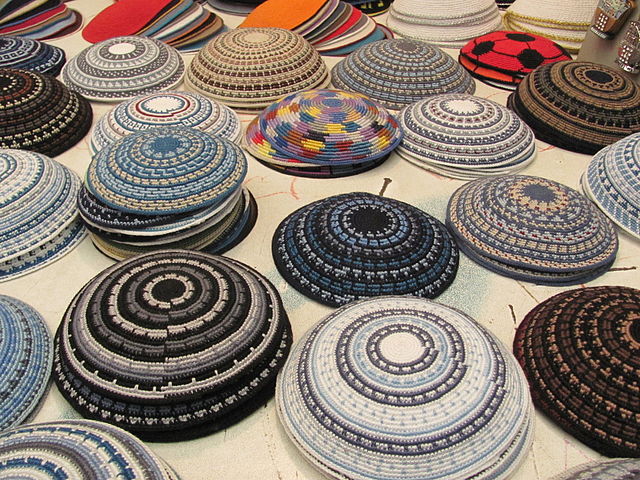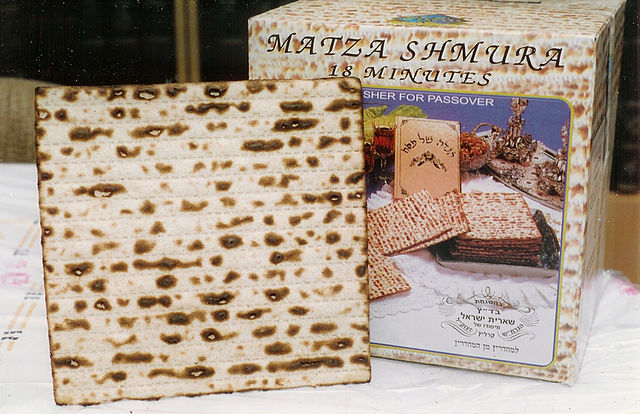Last updated on July 6th, 2021
Facts about Israel — Palestine Conflict
36. Palestinian Arabs deliberately targeted Jewish civilians in 1920-21 in violent riots in Jaffa and Jerusalem. More than 85 Jews were massacred in several locations in 1929. The Black Hand (the first Palestinian terror organization and a forerunner to the PLO) carried out attacks against Jews in the early 1930s. During the 1936-39 Arab Revolt, violence against Jewish civilians in Palestine was widespread.
37. In 1947 the U.N. voted to partition not only the state of Israel but also the British Mandate of Palestine, in recognition that both Arabs and Jews had legitimate claims to the land. Israel then, and repeatedly since, accepted the two-state solution with an internationally administered zone in Jerusalem. The Arab population refused and rioted. In 1948 the Palestinians ambushed and destroyed a medical convoy and the civilians with it. The Arab-Israeli conflict is, at heart, about the existence of Israel and not about occupation.
38. Since the founding of the PLO in 1964, leader Yasser Arafat repeatedly stated his goal was the complete elimination of the state of Israel. Following him, the leaders of Hezbollah and Hamas in Palestine, along with Iranian president Ahmadinejad, continued with the same aim: to destroy Israel entirely. To this day, the Palestinian media announces this goal repeatedly and the conflict continues. During the Six Day War schools children were massacred. Eleven Israeli athletics were killed at the 1972 Olympic Games.
39. War, terrorist acts, retaliations, and acts of violence have been ongoing for more than four decades. Suicide bombings began in 1989 and continue to this day. In recent years, shelling of Israeli targets has been done. Palestinians terrorists have their military targets embedded within civilian centers to increase the amount of collateral damage from any retaliatory strikes and swing public opinion away from Israel.
40. Notable in the midst of all the conflict are the two countries which have forged lasting peace accords with Israel and established diplomatic relationships with the state of Israel. The nations of Egypt and Jordan are the only ones.
You may like: facts about Turkey
Facts about the Jews
41. The Jews are an ethno-religious group originating from the Hebrews, or Israelites. The Jewish people’s nationhood, religion and ethnicity are strongly interrelated; Judaism is their traditional faith but its observance may vary from strict observance to no observance at all.
42. Israel is the only Jewish state in the world. The Jewish people have maintained an unbroken presence there for well over 3,000 years. Its historical and archaeological sites testify to Jewish life through the centuries. Even the Koran refers to the Jews as the “Children of Israel”. The land of Israel is central to Judaism as the land God gave to them.
43. Historically from the time of Abraham for about 1,500 years, having a Jewish father made someone a Jew. For the following 1,900 years having a Jewish mother made someone a Jew. That rule has changed in the last 20 years. Now if you are Orthodox or Conservative, you are a Jew if your mother is Jewish. If you are a Reform or Reconstructionist Jew, you are Jewish if either parent is. You are born a Jew and no one can take that away from you.
44. The Yiddish language has been a part of Jewish identity for over a thousand years. Yiddish is used in a by Orthodox Jews worldwide and is Haredi Judaism’s first language of the home, school, and in many social settings. It is also used in Hasidic Yeshivas.
45. Today there are around 14,500,000 Jewish people in the world.
Facts about Judaism
46. Judaism is the religion, culture, philosophy and way of life of the Jewish people. An ancient monotheistic religion, Judaism is the 10th largest religion in the world. Judaism is the expression of the covenantal relationship God has established with the “children of Israel”.
47. In Judaism, religion and life are one. They cannot be separated. There are celebrations and holidays throughout the year, like Passover, Rosh Hashanah and Yom Kippur. Judaism and the Jews use the lunar calendar in which the New Year comes as early as August through October. In Israel on Yom Kippur all stores are closed and there is no traffic as everyone stays home to celebrate. When a Jewish boy turns 13 or a Jewish girl turns 12 they celebrate their Bar Mitzvah or Bat Mitzvah, which is a rite of passage into adulthood. Other holidays include the Sabbath, the Festival of Booths, Hanukkah and Purim.
48. Judaism has developed different sects and faith expressions over time. These include Conservative, Orthodox, Hasidic, and reformed Judaism. The Star of David is the religious symbol of Judaism. The brimless skullcap worn in Temple (and at all times by some men) is a kippah and a prayer shawl is called a Tallit.

49. A kosher diet involves eating according to dietary laws found in the Torah. Kosher means fit for use and as it relates to food, it means not only eating according to the prescribed Biblical code but also with reverence for all life and the connection between what we eat and how we act in the world.
50. Different foods go with different Judaic holidays and celebrations. For Passover dinner, Jews still eat crispy flat bread called matza. The bread made for the Sabbath dinner is called challah.

Israel – the country at a glance
| Independence | 14 May 1948 (from League of Nations mandate under British administration) |
|---|---|
| Capital City | Jerusalem 31°47′N 35°13′E |
| Largest City | Jerusalem 31°47′N 35°13′E |
| Area | total: 20,770 sq km land: 21,497 sq km water: 440 sq km (slightly larger than New Jersey) |
| Population | 9,402,617 (2024 est.) |
| Suffrage | 18 years of age; universal; 17 years of age for municipal elections |
| Literacy | 97.8% (2011 est.) |
| Official Language | Hebrew and Arabic |
| Borders | Lebanon, Syria, Jordan and Egypt |
| Currency | New shekel (ILS) |
| Religions | Jewish, Muslim Christian, Druze and others |
| Demonym | Israeli |
| Life expectancy at birth | 83.1 years (2024 est.) Life expectancy at birth indicates the number of years a newborn infant would live if prevailing patterns of mortality at the time of its birth were to stay the same throughout its life. |
| Climate | temperate; hot and dry in southern and eastern desert areas |
| Terrain | Negev desert in the south; low coastal plain; central mountains; Jordan Rift Valley |
| Mean elevation | 508 m |
| Lowest point | Dead Sea -431 m |
| Highest point | 2,236 m |
| Coastline | 273 km |
| Natural resources | timber, potash, copper ore, natural gas, phosphate rock, magnesium bromide, clays, sand |
| Agricultural land | 23.8% |
| Government type | parliamentary democracy |
| President | Isaac Herzog |
| Prime Minister | Yair Lapid |
| Birth rate | 19.1 births/1,000 population (2024 est.) |
| Death rate | 5.2 deaths/1,000 population (2024 est.) |
| Sex ratio | 1.01 male(s)/female (2024 est.) |
| National colors | blue, white |
| National symbol | Star of David (Magen David), menorah (seven-branched lampstand) |
| National holiday | Independence Day, 14 May (1948) |
| National anthem | "Hatikvah" (The Hope) |
| Industries | high-technology products (including aviation, communications, computer-aided design and manufactures, medical electronics, fiber optics), wood and paper products, potash and phosphates, food, beverages, and tobacco, caustic soda, cement, construction, metal products, chemical products, plastics, cut diamonds, textiles, footwear |
| Exports | $156.331 billion (2023 est.) machinery and equipment, software, cut diamonds, agricultural products, chemicals, textiles and apparel |
| Imports | $137.487 billion (2023 est.) raw materials, military equipment, investment goods, rough diamonds, fuels, grain, consumer goods |
| GDP - per capita (PPP) | $48,400 (2023 est.) |
| Time Zone | IST (UTC+2) Summer (DST) IDT (UTC+3) |
| Internet country code | .il |
| Calling Code | +972 |
| Drives on the | Right |
| Last updated | February 24, 2025 |
